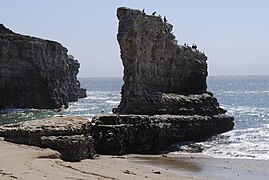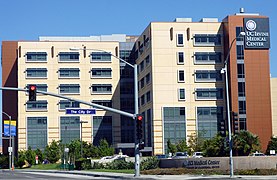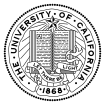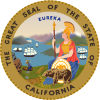University of California
 |
|
| Motto | Fiat lux(Latin) |
|---|---|
|
Motto in English
|
Let there be light |
| Type | Publicresearchuniversity system |
| Established | March 23, 1868 |
| Endowment | $17.69 billion (2023)[1] |
| Budget | $51.4 billion (2023–2024)[2] |
| President | Michael V. Drake |
|
Academic staff
|
25,400 (March 2024)[2] |
|
Administrative staff
|
173,300 (March 2024)[2] |
| Students | 295,573 (Fall 2023)[3] |
| Undergraduates | 233,272 (Fall 2023)[3] |
| Postgraduates | 62,229 (Fall 2023)[3] |
| Location |
Oakland(Office of the President)
,
California
,
United States
37°48′8″N122°16′17″W / 37.80222°N 122.27139°W |
| Campus | 10 campuses under direct control (nine with undergraduate and graduate schools, one professional/graduate only), one affiliated law school, one national laboratory |
| Colors | Blue Gold[4] |
| Website | universityofcalifornia |
 |
|
TheUniversity of California(UC) is apublicland-grantresearchuniversity systemin the U.S. state ofCalifornia. Headquartered inOakland, the system is composed of its ten campuses atBerkeley,Davis,Irvine,Los Angeles,Merced,Riverside,San Diego,San Francisco,Santa Barbara, andSanta Cruz, along with numerous research centers and academic centers abroad.[5]The system is the state'sland-grant university.[6]
Major publications generally rank most UC campuses as being among the best universities in the world. In 1900, UC was one of the founders of theAssociation of American Universitiesand since the 1970s seven of its campuses, in addition to Berkeley, have been admitted to the association. Berkeley, Davis, Irvine, Los Angeles, Santa Barbara, Santa Cruz, and San Diego are consideredPublic Ivies, making California the state with the most universities in the nation to hold the title.[7][8]UC campuses have large numbers of distinguishedfacultyin almost everyacademic discipline, with UC faculty and researchers having won 71 Nobel Prizes as of 2021.[9]
The system's ten campuses have a combined student body of 295,573 students, 25,400 faculty members, 173,300 staff members and over two million livingalumni.[2]Its newest campus inMercedopened in fall 2005. Nine campuses enroll bothundergraduateandgraduatestudents; one campus,UC San Francisco, enrolls only graduate and professional students in the medical and health sciences. In addition, theUniversity of California College of the Lawlocated in San Francisco is legally affiliated with UC and shares its name but is otherwise autonomous. Under theCalifornia Master Plan for Higher Education, the University of California is a part of the state's three-system public higher education plan, which also includes theCalifornia State Universitysystem and theCalifornia Community Collegessystem. UC is governed by aBoard of Regentswhose autonomy from the rest of the state government is protected by the state constitution.[10]The University of California also manages or co-manages three national laboratories for theU.S. Department of Energy:Lawrence Berkeley National Laboratory(LBNL),Lawrence Livermore National Laboratory(LLNL), andLos Alamos National Laboratory(LANL).[11]
The University of California was founded on March 23, 1868, and operated inOakland, where it absorbed the assets of theCollege of Californiabefore moving toBerkeleyin 1873.[12][13]It also affiliated with independent medical and law schools in San Francisco. Over the next eight decades, several branch locations and satellite programs were established across the state. In March 1951, the University of California began to reorganize itself into something distinct from its campusin Berkeley, with UC PresidentRobert Gordon Sproulstaying in place as chief executive of the UC system, whileClark Kerrbecame Berkeley's first chancellor[14][15][16][17]andRaymond B. Allenbecame the first chancellor of UCLA.[18]However, the 1951 reorganization was stalled by resistance from Sproul and his allies,[19]and it was not until Kerr succeeded Sproul as UC president that UC was able to evolve into a university system from 1957 to 1960.[20]At that time, chancellors were appointed for additional campuses and each was granted some degree of greater autonomy.[21]
History
[edit]Early history
[edit]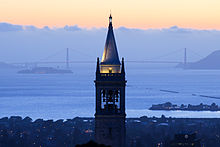
In 1849, the state of California ratified its first constitution, which contained the express objective of creating a complete educational system including a state university.[22]Taking advantage of theMorrill Land-Grant Acts, theCalifornia State Legislatureestablished an Agricultural, Mining, and Mechanical Arts College in 1866.[23][24]However, it existed only on paper, as a placeholder to secure federalland-grant funds.[24]
Meanwhile,CongregationalministerHenry Durant, an alumnus ofYale, had established the private Contra Costa Academy, on June 20, 1853, inOakland, California.[23]The initial site was bounded by Twelfth and Fourteenth Streets and Harrison and Franklin Streets indowntown Oakland[23](and is marked today by State Historical Plaque No. 45 at the northeast corner of Thirteenth and Franklin). In turn, the academy's trustees were granted a charter in 1855 for aCollege of California, though the college continued to operate as acollege preparatory schooluntil it added college-level courses in 1860.[23][24]The college's trustees, educators, and supporters believed in the importance of aliberal arts education(especially the study of the Greek and Romanclassics), but ran into a lack of interest inliberal arts collegeson theAmerican frontier(forpost-secondarydegrees, the college was graduating only three or four students per year).[24]

In November 1857, the college's trustees began to acquire various parcels of land facing theGolden Gatein what is nowBerkeleyfor a future planned campus to the north of Oakland.[23]But first, they needed to secure the college's water rights by buying a large farm to the east.[23]In 1864, they organized the College Homestead Association, which borrowed $35,000 to purchase the land, plus another $33,000 to purchase 160 acres (650,000 m2) ofland to the south of the future campus.[25]The association subdivided the latter parcel and started selling lots with the hope it could raise enough money to repay its lenders and also create a newcollege town.[23]But sales of new homesteads fell short.[23]
GovernorFrederick Lowfavored the establishment of a state university based upon theUniversity of Michiganplan, and thus in one sense may be regarded as the founder of the University of California.[23][24]At the College of California's 1867commencement exercises, where Low was present,Yale UniversityprofessorBenjamin Silliman Jr.criticized Californians for establishing apolytechnic school, instead of a real university.[23][24]That same day, Low reportedly first suggested a merger of the already-functional College of California (which had land, buildings, faculty, and students, but not enough money) with the nonfunctional state college (which had money and nothing else), and went on to participate in the ensuing negotiations.[23][24]

On October 9, 1867, the college's trustees reluctantly agreed to join forces with the state college to their mutual advantage, but under one condition—that there not be simply an "Agricultural, Mining, and Mechanical Arts College", but a complete university, within which the assets of the College of California would be used to create a College of Letters (now known as theCollege of Letters and Science).[23][24][26]Accordingly, the Organic Act, establishing the University of California, was introduced as a bill byAssemblymanJohn W. Dwinelleon March 5, 1868, and after it was duly passed by both houses of the state legislature, it was signed intostate lawby GovernorHenry H. Haight(Low's successor) on March 23, 1868.[23][24][27]
However, as legally constituted, the new university wasnotan actual merger of the two colleges, but was an entirely new institution which merely inherited certain objectives and assets from each of them.[28]Governor Haight saw no need to honor any tacit understandings reached with his predecessor about institutional continuity.[24]Only two college trustees became regents and a single faculty member (Martin Kellogg) was hired by the new university.[24]By April 1869, the trustees had second thoughts about their agreement to donate the college's assets and disincorporate. To get them to proceed, regentJohn B. Feltonhelped them bring a "friendly suit" against the university to test the agreement's legality—which they promptly lost.[29]
The University of California's second president,Daniel Coit Gilman, openedits new campusinBerkeleyin September 1873.[30]
UC affiliates
[edit]
Section 8 of the Organic Act authorized the Board of Regents to affiliate the University of California with independent self-sustaining professional colleges.[31][32]"Affiliation" meant UC and its affiliates would "share the risk in launching new endeavors in education".[31]The affiliates shared the prestige of the state university's brand, and UC agreed to award degrees in its own name to their graduates on the recommendation of their respective faculties, but the affiliates were otherwise managed independently by their own boards of trustees, charged their own tuition and fees, and maintained their own budgets separate from the UC budget.[31]It was through the process of affiliation that UC was able to claim it had medical and law schools in San Francisco within a decade of its founding.[31]
In 1879, California adopted its second andcurrent constitution, which included unusually strong language to ensure UC's independence from the rest of thestate government.[10][33]This had lasting consequences for theHastings College of the Law, which had been separately chartered and affiliated in 1878 by an act of the state legislature at the behest of founderSerranus Clinton Hastings.[34]After a falling out with his own handpicked board of directors, the founder persuaded the state legislature in 1883 and 1885 to pass new laws to place his law school under the direct control of the Board of Regents.[35]In 1886, theSupreme Court of Californiadeclared those newer acts to be unconstitutional because the clause protecting UC's independence in the 1879 state constitution had stripped the state legislature of the ability to amend the 1878 act.[36][37]To this day, the College of the Law (which dropped Hastings from its name in 2023) remains a UC affiliate, maintains its own board of directors, and is not governed by the regents.[31][36]
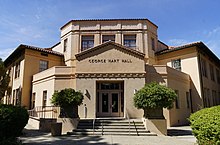
In contrast,Toland Medical College(founded in 1864 and affiliated in 1873) and later, the dental, pharmacy, and nursing schools in San Francisco were affiliated with UC through written agreements, and not statutes invested with constitutional importance by court decisions.[31]In the early 20th century, the Affiliated Colleges (as they came to be called) began to agree to submit to the regents' governance during the term of PresidentBenjamin Ide Wheeler, as the Board of Regents had come to recognize the problems inherent in the existence of independent entities that shared the UC brand but over which UC had no real control.[31]While Hastings remained independent, the Affiliated Colleges were able to increasingly coordinate their operations with one another under the supervision of the UC president and regents, and evolved into the health sciences campus known today as the University of California, San Francisco.[31]
North-south tensions and decentralization
[edit]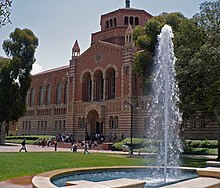
In August 1882, the California State Normal School (whose original normal school inSan Joseis nowSan Jose State University) opened a second school in Los Angeles to train teachers for the growing population of Southern California.[38]In 1887, the Los Angeles school was granted its own board of trustees independent of the San Jose school, and in 1919, the state legislature transferred it to UC control and renamed it the Southern Branch of the University of California.[39]In 1927, it became theUniversity of California at Los Angeles; the "at" would be replaced with a comma in 1958.[40]
Los Angeles surpassed San Francisco in the1920 censusto become the most populous metropolis in California. Because Los Angeles had become the state government's single largest source of both tax revenue and votes, its residents felt entitled to demand more prestige and autonomy for their campus. Their efforts bore fruit in March 1951, when UCLA became the first UC site outside of Berkeley to achievede jurecoequal status with the Berkeley campus. That month, the regents approved a reorganization plan under which both the Berkeley and Los Angeles campuses would be supervised by chancellors reporting to the UC president.[14][15][16][41]However, the 1951 plan was severely flawed; it was overly vague about how the chancellors were to become the "executive heads" of their campuses. Due to stubborn resistance from President Sproul and several vice presidents and deans—who simply carried on as before—the chancellors ended up as glorifiedprovostswith limited control over academic affairs and long-range planning while the president and the regents retainedde factocontrol over everything else.[19]
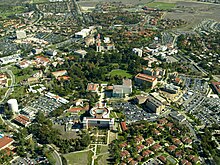
Upon becoming president in October 1957, Clark Kerr supervised UC's rapid transformation into a true public university system through a series of proposals adopted unanimously by the regents from 1957 to 1960.[20][21]Kerr's reforms included expressly granting all campus chancellors the full range of executive powers, privileges, and responsibilities which Sproul had denied to Kerr himself, as well as the radical decentralization of a tightly knit bureaucracy in which all lines of authority had always run directly to the president at Berkeley or to the regents themselves.[20][21][41]In 1965, UCLA ChancellorFranklin D. Murphytried to push this to what he saw as its logical conclusion: he advocated for authorizing all chancellors to report directly to the Board of Regents, thereby rendering the UC president redundant.[42]Murphy wanted to transform UC from one federated university into a confederation of independent universities, similar tothe situation in Kansas(from where he was recruited).[42]Murphy was unable to develop any support for his proposal, Kerr quickly put down what he thought of as "Murphy's rebellion", and therefore Kerr's vision of UC as a university system prevailed: "one university with pluralistic decision-making".[42]

During the 20th century, UC acquired additional satellite locations which, like Los Angeles, were all subordinate to administrators at the Berkeley campus. California farmers lobbied for UC to performapplied researchresponsive to their immediate needs; in 1905, the Legislature established a "University Farm School" atDavisand in 1907 a "Citrus Experiment Station" atRiversideas adjuncts to the College of Agriculture at Berkeley. In 1912, UC acquired aprivate oceanography laboratoryin San Diego, which had been founded nine years earlier by local business promoters working with a Berkeley professor. In 1944, UC acquired Santa Barbara State College from the California State Colleges, the descendants of the State Normal Schools.[43]In 1958, the regents began promoting these locations to general campuses, thereby creatingUCSB(1958),UC Davis(1959),UC Riverside(1959),UC San Diego(1960), andUCSF(1964).[44][45]Each campus was also granted the right to have its own chancellor upon promotion. In response to California's continued population growth, UC opened two additional general campuses in 1965, withUC Irvineopening inIrvineandUC Santa Cruzopening inSanta Cruz.[44]The youngest campus,UC Mercedopened in fall 2005 to serve theSan Joaquin Valley.
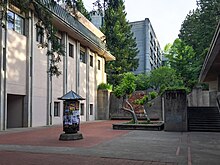
After losing campuses in Los Angeles and Santa Barbara to the University of California system, supporters of the California State College system arranged for the state constitution to be amended in 1946 to prevent similar losses from happening again in the future.[43]
With decentralization complete, it was decided in 1986 that the UC president should no longer be based at the Berkeley campus, and the UC Office of the President moved toKaiser Centerin Oakland in 1989.[46]That lakefront location was subject to widespread criticism as "too elegant and too corporate for a public university".[47]In 1998, the Office of the President moved again, to a newly constructed but much more modest building near the former site of the College of California in Oakland.[48]
Modern history
[edit]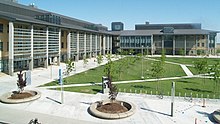
TheCalifornia Master Plan for Higher Educationof 1960 established that UC must admit undergraduates from the top 12.5% (one-eighth) of graduating high school seniors in California. Prior to the promulgation of the Master Plan, UC was to admit undergraduates from the top 15%. UC does not currently adhere to all tenets of the original Master Plan, such as the directives that no campus was to exceed total enrollment of 27,500 students (in order to ensure quality) and that public higher education should betuition-freefor California residents. Five campuses, Berkeley, Davis, Irvine, Los Angeles, and San Diego, each have current total enrollment at over 30,000, and of these five, all but Irvine have undergraduate enrollments over 30,000.[3]
After the state electorate severely limited long-termproperty taxrevenue by enactingProposition 13in 1978, UC was forced to make up for the resulting collapse in state financial support by imposing a variety of fees which were tuition in all but name.[49][50][51]On November 18, 2010, the regents finally gave up on the longstandinglegal fictionthat UC does not charge tuition by renaming the Educational Fee to "Tuition".[52]As part of its search for funds during the 2000s and 2010s, UC quietly began to admit higher percentages of highly accomplished (and more lucrative) students from other states and countries,[53]but was forced to reverse course in 2015 in response to the inevitable public outcry and start admitting more California residents.[54][55]
On November 14, 2022, about 48,000 academic workers at all ten UC campuses, as well as theLawrence Berkeley National Laboratory, went onstrike for higher pay and benefitsas authorized by theUnited Auto Workers(UAW) union.[56]UAW alleged more than 20unfair labor practicecharges against UC, including unilateral changes in policy and obstructing worker negotiation.[57]The strike lasted almost six weeks, officially ending on December 23.[58]
Governance
[edit]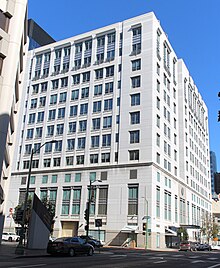
All University of California campuses except the College of the Law in San Francisco are governed by theRegents of the University of Californiaas required by theConstitution of the State of California.[33]Eighteen regents are appointed by thegovernorfor 12-year terms.[33]One memberis a student appointed for a one-year term.[33]There are also sevenex officiomembers—thegovernor,lieutenant governor, speaker of theState Assembly,State Superintendent of Public Instruction, president and vice president of the UC alumni associations, and the UC president.[33]The Academic Senate, made up of faculty members, is empowered by the regents to set academic policies.[33]In addition, the system-wide faculty chair and vice-chair sit on the Board of Regents as non-voting members.[33]
President of the University of California
[edit]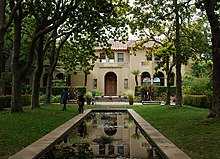
Originally, the president was the chief executive of the first campus, Berkeley. In turn, other UC locations (with the exception of the Hastings College of the Law) were treated as off-site departments of the Berkeley campus, and were headed byprovostswho were subordinate to the president. In March 1951, the regents reorganized the university's governing structure. Starting with the 1952–53 academic year, day-to-day "chief executive officer" functions for the Berkeley and Los Angeles campuses were transferred tochancellorswho were vested with a high degree of autonomy, and reported as equals to UC's president.[14][15][16]As noted above, the regents promoted five additional UC locations to campuses and allowed them to have chancellors of their own in a series of decisions from 1958 to 1964,[44]and the three campuses added since then have also been run by chancellors. In turn, all chancellors (again, with the exception of Hastings) report as equals to the University of California President. Today, the UC Office of the President (UCOP) and the Office of the Secretary and Chief of Staff to the Regents of the University of California share an office building in downtown Oakland that serves as the UC system's headquarters.[59]
Kerr's vision for UC governance was "one university with pluralistic decision-making".[60]In other words, the internal delegation of operational authority to chancellors at the campus level and allowing nine other campuses to become separate centers of academic life independent of Berkeley did not change the fact that all campuses remain part of one legal entity. As a 1968 UC centennialcoffee table bookexplained: "Yet for all its campuses, colleges, schools, institutes, and research stations, it remains one University, under one Board of Regents and one president—the University of California."[61]UC continues to take a "united approach" as one university in matters in which it inures to UC's advantage to do so, such as when negotiating with the legislature and governor in Sacramento.[60]The University of California continues to manage certain matters at the systemwide level in order to maintain common standards across all campuses, such as student admissions, appointment and promotion of faculty, and approval of academic programs.[62]
- List of presidents
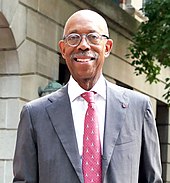
|
|
|
All UC presidents had been white men until 2013, when formerHomeland SecuritySecretary, andGovernor of Arizona,Janet Napolitanobecame the first woman to hold the office of UC President.[63]On July 7, 2020, Dr.Michael V. Drake, a former UC chancellor and medical research professor, was selected as the 21st president of the University of California system, making him the first black president to hold the office in UC's 152-year history. He took office on August 1, 2020.[64]
- Official residences
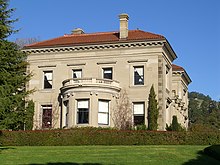
Besides substantial six-figure incomes, the UC president and all UC chancellors enjoy controversial perks such as free housing in the form of university-maintained mansions.[65]In 1962, Anson Blake's will donated his 10-acre (40,000 m2) estate (Blake Garden) and mansion (Blake House) inKensingtonto the University of California's Department of Landscape Architecture. In 1968, the regents decided to make Blake House the official residence of the UC president. As of 2005, it cost around $300,000 per year to maintain Blake Garden and Blake House; the latter, built in 1926, is a 13,239-square-foot (1,229.9 m2) mansion with a view of San Francisco Bay.[65]
Blake House has sat vacant since President Dynes departed in 2008, due to the high cost of needed seismic strengthening and renovating its dilapidated interior (estimated at $3.5 million in 2013).[66]From 2008 to 2022, all three UC presidents during that timeframe (i.e., Yudof, Napolitano, and Drake) lived in rented homes.[66]In 2022, UC finally purchased theSelden Williams House, a 6,400-square-foot (590 m2) house in Berkeley, for $6.5 million to serve as the UC president's official residence.[66]UC had previously owned the same home from 1971 to 1991, when it served as the official residence of the UC vice president.[66](UC no longer has a single "vice president"; the president's direct reports now have titles like "executive vice president", "senior vice president", or "vice president".[67])
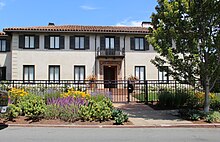
All UC chancellors traditionally live for free in a mansion on or near campus that is usually known asUniversity House, where they host social functions attended by guests and donors.[68]Berkeley'sUniversity Houseformerly served as the official residence of the UC president, but is now the official residence of Berkeley's chancellor. UCSD'sUniversity Housewas closed from 2004 to 2014 for $10.5 million in renovations paid for by private donors, which were so expensive because the 12,000-square-foot structure sits on top of a sacred Native American cemetery and next to an unstable coastal bluff.[69][70]Not all chancellors prefer to live on campus; at Santa Barbara, ChancellorRobert Huttenbackfound that campus's University House to be unsatisfactory, then was convicted in 1988 of embezzlement for his unauthorized use of university funds to improve his off-campus residence.[71]
Finances
[edit]The State of California currently (2021–2022) spends $3.467 billion on the UC system, out of total UC operating revenues of $41.6 billion. The "UC Budget for Current Operations" lists the medical centers as the largest revenue source, contributing 39% of the budget, the federal government 11%, Core Funds (State General Funds, UC General Funds, student tuition) 21%, private support (gifts, grants, endowments) 7% ,and Sales and Services at 21%. In 1980, the state funded 86.8% of the UC budget.[72]While state funding has somewhat recovered, as of 2019 state support still lags behind even recent historic levels (e.g. 2001) when adjusted for inflation.[72][73]
According to the California Public Policy Institute, California spends 12% of its General Fund on higher education, but that percentage is divided between the University of California, California State University and California Community Colleges. Over the past forty years, state funding of higher education has dropped from 18% to 12%, resulting in a drop in UC's per student funding from $23,000 in 2016 to a current $8,000 per year per student.[74]
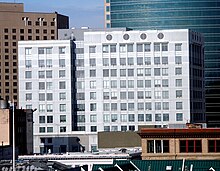
In May 2004, UC PresidentRobert C. Dynesand CSU ChancellorCharles B. Reedstruck a private deal, called the "Higher Education Compact", with GovernorSchwarzenegger. They agreed to slash spending by about a billion dollars (about a third of the university's core budget for academic operations) in exchange for a funding formula lasting until 2011. The agreement calls for modest annual increases in state funds (but not enough to replace the loss in state funds Dynes and Schwarzenegger agreed to), private fundraising to help pay for basic programs, and large student fee hikes, especially for graduate and professional students. A detailed analysis of the Compact by the Academic Senate "Futures Report" indicated, despite the large fee increases, the university core budget did not recover to 2000 levels.[75]Undergraduate student fees have risen 90% from 2003 to 2007.[76]In 2011, for the first time in UC's history, student fees exceeded contributions from the State of California.[77]
TheFirst District Court of Appealin San Francisco ruled in 2007 that the University of California owed nearly $40 million in refunds to about 40,000 students who were promised that their tuition fees would remain steady, but were hit with increases when the state ran short of money in 2003.[78]
In September 2019, the University of California announced it willdivestits $83 billion in endowment and pension funds from the fossil fuel industry, ostensibly to avoid the "financial risk" inherent in that industry because ofclimate change, but also in response to pleas to stop investing in fossil fuel.[79]
Criticism
[edit]In 2008, theWestern Association of Schools and Colleges, the regional accreditor of the UC schools, criticized the UC system for "significant problems in governance, leadership and decision making" and "confusion about the roles and responsibilities of the university president, the regents and the 10 campus chancellors with no clear lines of authority and boundaries".[80]
In 2016, university system officials admitted that they monitored all e-mails sent to and from their servers.[81]
Campuses and rankings
[edit]At present, the UC system officially describes itself as a "ten campus" system consisting of the campuses listed below.[82]These campuses are under the direct control of the regents and president.[83]Only ten campuses are listed on the official UC letterhead.[84]
Although it shares the name and public status of the UC system, theCollege of the Law, San Francisco(formerly Hastings College of the Law) is not controlled by the regents or president; it has a separate board of directors and must seek funding directly from the Legislature. However, under the California Education Code, Hastings degrees are awarded in the name of the regents and bear the signature of the UC president.[85]Furthermore, Education Code section 92201 states that Hastings "is affiliated with the University of California, and is the law department thereof".[86]
University rankings
[edit]Annually, UC campuses are ranked highly by various publications. Six UC campuses rank in the top 50 U.S. National Universities of 2022 byU.S. News & World Report, withUCLA,Berkeley,UC Santa Barbara,UC San Diego,UC Irvine, andUC Davisall ranked in the top 50. Four UC campuses also ranked in the top 50 in theU.S. News & World ReportBest Global Universities Rankings in 2021, namelyBerkeley,UCLA,UCSF, andUC San Diego.[needs update]UCSFis ranked as one of the top universities inbiomedicinein the world[87][88][89][90][91][92]and theUCSF School of Medicineis ranked 3rd in the United States among research-oriented medical schools and forprimary carebyU.S. News & World Report.[93]
Three UC campuses:Berkeley,UCLA, andUC San Diegoall ranked in the top 15 universities in the US according to the 2020Academic Ranking of World Universities (ARWU)US National University Rankings and also in the top 20 in World University Rankings. TheAcademic Ranking of World Universitiesalso rankedUCSF,UC Davis,UC Irvine, andUC Santa Barbarain the top 50 US National Universities and in the top 100 World Universities in 2020.[needs update]
Berkeley,UCLA, andUC San Diegoall ranked in the top 50 universities in the world according to both theTimes Higher Education World University Rankingsfor 2021 and theCenter for World University Rankings (CWUR)for 2020, whileUC Irvine,UC Santa Barbara, andUC Davisranked in the top 100 universities in the world.[needs update]Forbesalso ranked the six UC campuses mentioned above as being in the top 50 universities in America in 2021.[94]Forbes also named the top three public universities in America as all being UC campuses, namely, Berkeley, UCLA, and UCSD, and ranked three more campuses, UC Davis, UC Santa Barbara, and UC Irvine as being among the top 20 public universities in America in 2021.[95]The six aforementioned campuses are all consideredPublic Ivies.[7]TheQS World University Rankingsfor 2021 ranked three UC campuses: Berkeley, UCLA and UC San Diego as being in the top 100 universities in the world.[needs update]
Individual academic departments also rank highly among the UC campuses. The 2021U.S. News & World ReportBest Graduate Schools report rankedBerkeleyas being among the top 5 universities in the nation in the departments of Psychology, Economics, Political Science, Computer Science, Engineering, Biological Sciences, Chemistry, Mathematics, Earth Sciences, Physics, Sociology, History, and English, and rankedUCLAin the top 20 in the same departments.[96][97]U.S. News & World Reportalso ranked the same departments atUC San Diegoamong the top 20 in the nation, with the exception of the departments of Sociology, History, and English.[98]UC Davis,UC IrvineandUC Santa Barbararanked in the top 50 in the departments of Psychology, Economics, Political Science, Computer Science, Engineering, Biological Sciences, Chemistry, Mathematics, Earth Sciences, Physics, Sociology, History, and English, with the exception of UC Santa Barbara's Psychology and Political Science departments, according toU.S. News & World Report.UC Santa CruzandUC Riversideranked in the top 100 in the nation in the same departments, along withUC Merced'sPsychology and Political Science departments.[99][100][101]
| Campus | Founded | Enrollment (Fall2023)[102] |
Endowment[a] | Athletics | Rankings | ||||||||
|---|---|---|---|---|---|---|---|---|---|---|---|---|---|
| Affiliation | Nickname | USNWRNational (2024)[104] |
USNWRGlobal (2024)[105] |
ARWUNational (2024)[106] |
ARWUWorld (2024)[106] |
CWURWorld (2024)[107] |
ForbesNational (2024)[108] |
THEWorld (2024)[109] |
QSWorld (2025)[110] |
||||
 Berkeley |
1868 | 45,699 | $2.91 billion | NCAA Div I ACC |
Golden Bears | 15 (tie) |
5 | 4 | 5 | 12 | 5 | 9 | 12 |
 Davis |
1905 | 39,707 | $678.04 million | NCAA Div I Big West |
Aggies | 28 (tie) |
89 (tie) |
39-50 | 101-150 | 55 | 42 | 59 | 130 |
 Irvine |
1965 | 36,582 | $795.89 million | NCAA Div I Big West |
Anteaters | 33 (tie) |
100 (tie) |
34 | 76 | 85 | 39 | 92 (tie) |
307 |
 Los Angeles |
1919 | 46,678 | $3.87 billion | NCAA Div I Big Ten |
Bruins | 15 (tie) |
11 | 12 | 15 | 17 | 13 | 18 | 42 |
 Merced |
2005 | 9,147 | $29.64 million | NAIA CalPac(NCAA D-IICCAAin 2025) |
Golden Bobcats | 60 (tie) |
698 (tie) |
115-142 | 501-600 | 831 | 324 | 401-500 | — |
 Riverside |
1954 | 26,426 | $249.87 million | NCAA Div I Big West |
Highlanders | 76 (tie) |
223 (tie) |
60-78 | 201-300 | 263 | 97 | 251-300 | 497 (tie) |
 San Diego |
1960 | 42,376 | $1.36 billion | NCAA Div I Big West |
Tritons | 28 (tie) |
21 | 14-15 | 18 | 34 | 21 | 34 | 72 |
 San Francisco |
1864 | 3,126 (Graduate only) |
$2.72 billion | — | — | — | 15 | 16 | 20 | 37 | — | — | — |
 Santa Barbara |
1909 | 26,068 | $578.76 million | NCAA Div I Big West |
Gauchos | 35 (tie) |
89 (tie) |
31 | 64 | 108 | 35 | 69 | 178 |
 Santa Cruz |
1965 | 19,764 | $153.36 million | NCAA Div III C2C |
Banana Slugs | 82 (tie) |
129 | 51-59 | 151–200 | 323 | 187 | 201-250 | 393 (tie) |
- ^Assets managed by campus foundations including investment allocations to the General Endowment Pool (GEP) and Short Term Investment Pool (STIP).
Academics
[edit]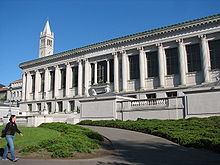
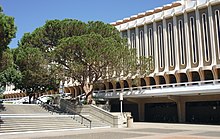
As of the end of fiscal year 2022, UC controls 13,702 active patents. UC researchers and faculty were responsible for 1,570 new inventions that same year.[2]On average, UC researchers create four new inventions per day.[2]
Eight of UC's ten campuses (Berkeley,UC Davis,UCI,UCLA,UC Riverside,UCSD,UC Santa Barbara, andUC Santa Cruz) are members of theAssociation of American Universities(AAU),[2]an alliance of elite American research universities[111]founded in 1900 at UC's suggestion.[112]Collectively, the system counts among its faculty (as of 2002):
- 389 members of theAcademy of Arts and Sciences
- 5Fields Medalrecipients
- 19FulbrightScholars
- 25MacArthur Fellows
- 254 members of theNational Academy of Sciences
- 91 members of theNational Academy of Engineering
- 13National Medal of Sciencelaureates
- 61Nobel laureates[9]
- 106 members of theInstitute of Medicine
Nobel Prize winners
[edit]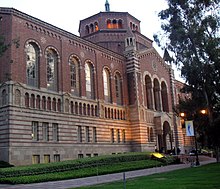
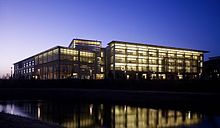
As of October 2021, the following data are taken fromList of Nobel laureates by university affiliation, which counts university alumni and staff, and are not the official count from the University of California.
| Campus | No. of winners | Founded | No. of Winners/ 10 years of age |
|---|---|---|---|
| Berkeley | 110 | 1868 | 7.2 |
| San Diego | 28 | 1960 | 4.6 |
| Los Angeles | 27 | 1919 | 2.6 |
| Santa Barbara | 14 | 1909 | 1.8 |
| San Francisco | 10 | 1864 | 0.7 |
| Irvine | 7 | 1965 | 1.3 |
| Davis | 4 | 1905 | 0.3 |
| Riverside | 3 | 1954 | 0.4 |
| Santa Cruz | 1 | 1965 | 0.2 |
| Merced | 0 | 2005 | 0 |
UC Libraries
[edit]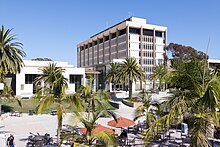
At 40.8 million print volumes,[113]the University of California library system is home to one of the largest collections of printed materials in the world. On July 27, 2021, all ten campuses went live with a unified online library catalog, UC Library Search. Besides on-campus libraries, the UC system also maintains two regional library facilities (one each for Northern and Southern California), which each accept older items from all UC campus libraries in their respective region. As of 2019, Northern Regional Library Facility is home to 7.4 million items, while Southern Regional Library Facility is home to 6.5 million items.
Academic calendar
[edit]Eight campuses operate on the quarter system, while two (Berkeley and Merced) are on the semester system. However, all five law schools operate on the semester system, as does theDavid Geffen School of Medicine at UCLA.
Academic organization
[edit]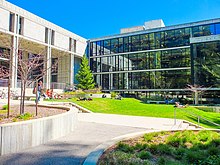
Davis, Los Angeles, Riverside, and Santa Barbara all followed Berkeley's example by aggregating the majority ofarts, humanities, and science departmentsinto a relatively large College of Letters and Science. Therefore, atBerkeley,Davis,Los Angeles, andSanta Barbara, their respective College of Letters and Science is by far the single largest academic unit on each campus. The College of Letters and Science at Los Angeles is the largest academic unit in the entire UC system.[114]Riverside laterseparated the natural sciencesand kept onlysocial sciences grouped with arts and humanities, an example followed by Merced at its founding (although Merced organizes its departments into schools and not colleges).
Due to President Kerr's interest in not reproducing the impersonal undergraduate experience often seen in such gigantic academic units, San Diego and Santa Cruz both implementedresidential collegesystems inspired by British models (in which each college has distinctive general education requirements reflecting its chosen theme)[115]and grouped most academic departments into a small number of broadly defined divisions which are all independent of the colleges. In February 2022, San Diego turned its divisions into schools.
Finally, Irvine is organized into 13 schools and San Francisco is organized into four schools, all of which are relatively narrow in scope.
Admissions
[edit]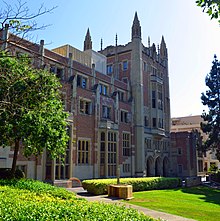
Each UC campus handles admissions separately, but a student wishing to apply for an undergraduate or transfer admission uses one application for all UC campuses. Graduate and professional school admissions are handled directly and separately by each department or program to which one applies.
In May 2020, UC approved plans to suspend standardized testing score requirements in admissions until 2024.[116]In May 2021, after a student lawsuit, the University of California announced that it would no longer consider SAT and ACT scores in admissions and scholarship decisions.[117]
TheEarly Academic Outreach Program(EAOP) was established in 1976 by University of California (UC) in response to theState Legislature'srecommendation to expand post-secondary opportunities to all of California's students including those who are first-generation, socioeconomically disadvantaged, and English-language learners.[118]As UC's largest academic preparation program, EAOP assists middle and high school students with academic preparation, admissions requirements, and financial aid requirements for higher education.[119]The program designs and provides services to foster students' academic development, and delivers those services in partnership with other academic preparation programs, schools, other higher education institutions and community/industry partners.[120]

The University of California admits a significant number of transfer students primarily from theCalifornia Community Colleges.[121]Approximately one out of three UC students begin at a community college before graduating.[121]In evaluating a transfer student's application the universities conduct a "comprehensive review" process that includes consideration of grade point averages of the generally required, transferable and or related courses for the intended major. The review may also include consideration of an applicant's enrollment in selective honor courses or programs, extracurricular activities, essay, family history, life challenges, and the location of the student's residence. Different universities emphasize different factors in their evaluations.[122]
Freshmen
[edit]Before 1986, students who wanted to apply to UC for undergraduate study could only apply to one campus. Students who were rejected at that campus but otherwise met the UC minimum eligibility requirements wereredirectedto another campus with available space.[123][124]Students who did not want to be redirected were refunded their application fees.[citation needed]UC Riverside chancellorIvan Hinderakerexplained in 1972: "Redirection has been a negative rather than a plus. Some come with achip on their shouldersso big they never give the campus a chance. They poison the attitudes of the students around them."[124]
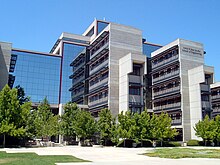
Therefore, in 1986, the undergraduate application system was changed to the current "multiple filing" system, in which students can apply to as many or as few UC campuses as they want on one application, paying a fee for each campus. This significantly increased the number of applications to the Berkeley and Los Angeles campuses, since students could choose a campus to attend after they received acceptance letters, without fear of being redirected to a campus they did not want to attend.[123]
The University of California accepts fully eligible students from among the top one-eighth (1/8) of California public high school graduates through regular statewide admission, or the top 9% of any given high school class through Eligibility in the Local Context (see below). Part of the eligibility process is completion of theA-G requirementsin high school. All eligible California high school students who apply are accepted to the university, though not necessarily to the campus of choice.[125][126]Eligible students who are not accepted to the campus(es) of their choice are placed in the "referral pool", where campuses with open space may offer admission to those students; in 2003, 10% of students who received an offer through this referral process accepted it.[127]In 2007, about 4,100 UC-eligible students who were not offered admission to their campus of choice were referred to UC Riverside or the system's newest campus, UC Merced.[128]In 2015, all UC-eligible students rejected by their campus of choice were redirected to UC Merced, which is now the only campus that has space for all qualified applicants.[129]
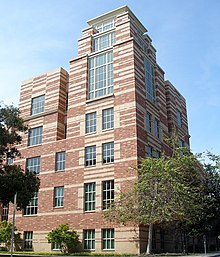
The old undergraduate admissions were conducted on a two-phase basis. In the first phase, students were admitted based solely on academic achievement. This accounted for between 50 and 75% of the admissions. In the second phase, the university conducted a "comprehensive review" of the student's achievements, including extracurricular activities, essay, family history, and life challenges, to admit the remainder. Students who did not qualify for regular admission were "admitted by exception"; in 2002, approximately 2% of newly admitted undergraduates were admitted by exception.[130]
The process for determining admissions varies. At some campuses, such asSanta BarbaraandSanta Cruz, a point system is used to weightgrade point average,SATReasoning orACTscores, and SAT Subject scores, while atSan Diego,Berkeley, andLos Angeles, academic achievement is examined in the context of the school and the surrounding community, known as a holistic review.
Race,gender,national origin, andethnicitywere not used as UC admission criteria due to the passing ofProposition 209. This information was collected for statistical purposes.
Eligibility in the Local Context, commonly referred to as ELC, is met by applicants ranked in the top 9% of their high school class in terms of performance on an 11-unit pattern of UC-approved high school courses. Beginning with fall 2007 applicants, ELC also requires a UC-calculated GPA of at least 3.0. Fully eligible ELC students are guaranteed a spot at one of UC's undergraduate campuses, though not necessarily at their first-choice campus or even to a campus to which they applied.[125]
In 2021, the University of California freshmen class was its most diverse and largest ever, with 84,223 students.[131]Latinos were the largest group at 37%; Asian Americans at 34%; white non-Hispanics at 20%; African-Americans at 5%; and 4% composed of American Indians, Pacific Islanders or those who declined to state their race or ethnicity.[131]
Student profile
[edit]| Campuses (2023)[132] |
California (2023)[133] |
United States (2023)[134] |
|
|---|---|---|---|
| African American | 4.7% | 6.5% | 13.7% |
| American Indian | 0.6% | 1.7% | 1.3% |
| Asian | 33.0% | 16.5% | 6.4% |
| Hispanic/Latino(a)(of any race; includingChicanosandWhite Hispanics) | 23.3% | 40.4% | 19.5% |
| Non-Hispanic White | 21.6% | 34.3% | 58.4% |
| Pacific Islander | 0.3% | 0.5% | 0.3% |
| International student | 13.9% | N/A | N/A |
| Unknown | 2.7% | N/A | N/A |
Admissions practices
[edit]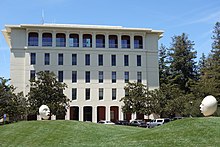
In many recent years, the University of California has faced growing criticism for high admissions of out-of-state or international students as opposed to in-state, California students. In particular, UC Berkeley and UCLA have been heavily criticized for this phenomenon due to their extraordinarily low acceptance rates compared to other campuses in the system.[135]At a Board of Regents meeting in 2015, California GovernorJerry Brownreportedly said about the problem: "And so you got your foreign students and you got your 4.0 folks, but just the kind of ordinary, normal students, you know, that got good grades but weren't at the top of the heap there—they're getting frozen out."[136]State lawmakers have proposed legislation that would reduce out-of-state admission.[137]
A 2020 Californiaauditor's reportindicated that at least 64 wealthy students were wrongfully admitted to UC schools as favors to powerful figures.[138][139][140]Many of the admissions were justified by falsely classifying the applicants as student athletes. The incidents disproportionately (55 of 64) occurred atUC Berkeley.
Research
[edit]
In 2006 theScholarly Publishing and Academic Resources Coalition (SPARC)awarded the University of California the SPARC Innovator Award for its "extraordinarily effective institution-wide vision and efforts to movescholarly communicationforward", including the 1997 founding (under then UC PresidentRichard C. Atkinson) of theCalifornia Digital Library (CDL)and its 2002 launching of CDL'seScholarship, aninstitutional repository. The award also specifically cited the widely influential 2005academic journal publishing reformefforts of UC faculty and librarians in "altering the marketplace" by publicly negotiating contracts with publishers, as well as their 2006 proposal to amend UC'scopyrightpolicy to allowopen accessto UC faculty research.[141]
On July 24, 2013, the UC Academic Senate adopted anOpen Access Policy, mandating that all UC faculty produced research with a publication agreement signed after that date be first deposited in UC's eScholarshipopen access repository.[142]
University of California systemwide research on theSATexam found that, after controlling for familial income and parental education, so-called achievement tests known as the SAT II had 10 times more predictive ability of college aptitude than the SAT I.[143]
One of their faculty members, Dr. Mitloehner, and a former student, Dr. Stackhouse-Lawson, has been criticized for taking money from Big Agriculture and allowing it to influence their reearch and work at the university.[144]
Peripheral enterprises
[edit]The University of California has a long tradition of involvement in many enterprises that are often geographically or organizationally separate from its general campuses, including national laboratories, observatories, hospitals, continuing education programs, hotels, conference centers, an airport, a seaport, and an art institute.
National laboratories
[edit]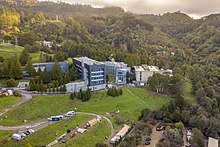
The University of California directly manages and operates oneUnited States Department of Energy National Laboratory:[145]
- Lawrence Berkeley National Laboratory(LBNL, or Berkeley Lab) (Berkeley, California)
UC is a limited partner in two separate privatelimited liability companiesthat manage and operate two other Department of Energy national laboratories:
- Los Alamos National Laboratory(LANL) (Los Alamos, New Mexico) operated by Triad National Security, LLC.
- Lawrence Livermore National Laboratory(LLNL) (Livermore, California) operated by Lawrence Livermore National Security, LLC.
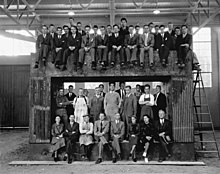
TheLawrence Berkeley National Laboratoryconducts unclassified research across a wide range of scientific disciplines with key efforts focused on fundamental studies of the universe, quantitative biology, nanoscience, new energy systems and environmental solutions, and the use of integrated computing as a tool for discovery.
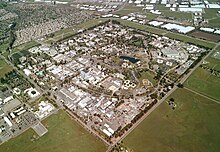
TheLawrence Livermore National Laboratoryuses advanced science and technology to ensure that U.S. nuclear weapons remain reliable. LLNL also has major research programs in supercomputing and predictive modeling, energy and environment, bioscience and biotechnology, basic science and applied technology, counter-proliferation of weapons of mass destruction, and homeland security. It is also home to the most powerful supercomputers in the world.
TheLos Alamos National Laboratoryfocuses most of its work on ensuring the reliability of U.S. nuclear weapons. Other work at LANL involves research programs into preventing the spread of weapons of mass destruction and US national security, such as protection of the US homeland from terrorist attacks.
The UC system's ties to the three laboratories have occasionally sparked controversy and protest, because all three laboratories have been intimately linked with the development ofnuclear weapons. During theWorld War IIManhattan Project, Lawrence Berkeley Lab developed the electromagnetic method for the separation of uranium isotopes used to develop the first atomic bombs. The Los Alamos and Lawrence Livermore labs have been involved in designing U.S. nuclear weapons from their inception until the shift intostockpile stewardshipafter the end of theCold War. Historically the two national laboratories in Berkeley and Livermore named afterErnest O. Lawrence, have had very close relationships on research projects, as well as sharing some business operations and staff. In fact,LLNLwas not officially severed administratively fromLBNLuntil the early 1970s. They also have much deeper ties to the university than the Los Alamos Lab, a fact seen in their respective original names; the University of California Berkeley Radiation Laboratory and the University of California Radiation Laboratory at Livermore.
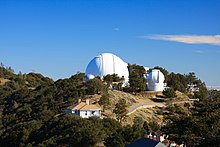
The UC system's ties to the labs have so far outlasted all periods of internal controversy. However, in 2003, the U.S. Department of Energy for the first time opened theLos Alamos National Laboratory(LANL) contract for bidding by other vendors. UC entered into a partnership withBechtel Corporation,BWXT, and theWashington Group International, and together they created a private company calledLos Alamos National Security, LLC(LANS). The only other bidder on the LANL contract was aLockheed MartinCorporation-created company that included, among others, theUniversity of Texas System. In December 2005, a seven-year contract to manage the laboratory was awarded to the Los Alamos National Security, LLC.[146]On October 1, 2007, the University of California ended its direct involvement in operating the Lawrence Livermore National Laboratory. Management of the laboratory was taken over by Lawrence Livermore National Security, LLC, a limited liability company whose members are Bechtel National, the University of California, Babcock & Wilcox, the Washington Division of URS Corporation, Battelle Memorial Institute, and The Texas A&M University System. Other than UC appointing three members to the two separate boards of directors (each with eleven members) that oversee LANS and LLNS, UC now has virtually no responsibility for or direct involvement in either LANL or LLNL. UC policies and regulations that apply to UC campuses and the Lawrence Berkeley National Laboratory in California no longer apply to LANL and LLNL, and the LANL and LLNL directors no longer report to the UC Regents or UC Office of the President.
Observatories
[edit]
The University of California manages twoobservatoriesas a multi-campus research unit headquartered atUC Santa Cruz.
- Lick ObservatoryatopMount Hamilton, in theDiablo Rangejust east ofSan Jose.
- Keck Observatoryat the 4,145 meters (13,599 feet) summit ofMauna Keain Hawaii.
The Astronomy Department at theBerkeleycampus manages theHat Creek Radio ObservatoryinShasta County.
High-performance networking
[edit]The University of California is a founding and charter member of theCorporation for Education Network Initiatives in California, a nonprofit organization that provides high-performance Internet-based networking to California's K-20 research and education community.
UC Natural Reserve System
[edit]TheNRSwas established in January 1965 to provide UC faculty with large areas of land where they could conduct long-term ecosystem research without having to worry about outside disturbances like tourists. Today, the NRS manages 39 reserves that total more than 756,000 acres (3,060 km2).
- Selected reserves of theUniversity of California Natural Reserve System
UC Agriculture and Natural Resources
[edit]University of California Agriculture and Natural Resources[147](UCANR, Division of Agriculture and Natural Resources) plays an important role in the state's agriculture industry, as mandated by UC's legacy as a land-grant institution. In addition to conducting agriculture andYouth developmentresearch, every county in the state has acooperative extensionoffice with county farm advisors. The county offices also support4-Hprograms and have nutrition, family, and consumer sciences advisors who assist local government. Currently, the division's University of California 4-H Youth Development Program[148]is a national leader in studyingthrivingin the field ofyouth development.[149]
Other national research centers
[edit]From September 2003 to July 2016, UC managed a contract valued at more than $330 million to establish and operate a University Affiliated Research Center (UARC) at theNASA Ames Research CenteratMoffett Federal Airfield—the largest grant ever awarded the university.UC Santa Cruzmanaged the UARC for the University of California, with the goal of increasing the science output, safety, and effectiveness ofNASA's missions through new technologies and scientific techniques.
Since 2002, theNSF-fundedSan Diego Supercomputer CenteratUC San Diegohas been managed by the University of California, which took over from the previous manager,General Atomics.
Medical centers and schools
[edit]
The University of California operates five medical centers throughout the state:
- UC Davis Medical Center, inSacramento;
- UC Irvine Medical Center, inOrange;
- UCLA Medical Center, comprising two distinct hospitals:
- Ronald Reagan UCLA Medical Center, in Los Angeles;
- UCLA Santa Monica Medical Center, inSanta Monica;
- UC San Diego Medical Center, comprising two distinct hospitals:
- UCSF Medical Center, operating as a single medical center across three physically distinct campuses around San Francisco.
- Medical centers of the University of California
There are two medical centers that bear the UCLA name, but are not operated by UCLA:Harbor–UCLA Medical CenterandOlive View–UCLA Medical Center. They are actuallyLos Angeles County-operated facilities that UCLA uses asteaching hospitals.
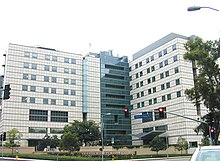
Each medical center serves as the primaryteaching sitefor that campus's medical school. UCSF is perennially among the top five programs in both research and primary care, and both UCLA and UC San Diego consistently rank among the top fifteen research schools, according to annual rankings published byU.S. News & World Report.[150]The teaching hospitals affiliated with each school are also highly regarded – theUCSF Medical Centerwas ranked the number one hospital in California and number 5 in the country byU.S. News & World Report's 2017 Honor Roll for Best Hospitals in the United States.[151]UC also has a sixth medical school—UC Riverside School of Medicine, the only one in the UC system without its own hospital.
In the latter half of the 20th century, the UC hospitals became the cores of full-fledged regional health systems; they were gradually supplemented by many outpatient clinics, offices, and institutes. Three UC hospitals are actually county hospitals that were sold to UC, which means that UC currently plays a major role in providing healthcare to the indigent. The medical hospitals operated by UC Irvine (acquired in 1976), UC Davis (acquired in 1978), and UC San Diego (acquired in 1984) each began as the respective county hospitals ofOrange County,Sacramento County, andSan Diego County. As of 2024, UC medical centers handle each year about 10 million outpatient visits, 393,802 emergency room visits, and roughly 1.23 million inpatient days.[2]
Facilities outside of California
[edit]
UC operates several other miscellaneous sites to support faculty, students, and researchers away from its general campuses:
- The UC Office of the President's Education Abroad Program currently operates one mini-campus which supports UC students, faculty, and alumni overseas:
- Casa de California inMexico City.
- EAP also briefly operated California House in London during the early-to-mid 2000s.
- UC Washington Centerin Washington, D.C., with a dormitory for students interning with thefederal government.
- UC Davis's UC Center Sacramento supports studentsinterningwith theCalifornia government.
- UC Berkeley operates the Richard B. Gump South Pacific Research Station inMo'orea,French Polynesiaon land donated in 1981 by the heir to the founder of theGump'shome furnishings store.[152]
Hospitality facilities
[edit]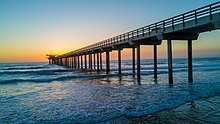
Unlike other land-grant institutions (e.g.,Cornell) UC does not provide ahospitality managementprogram, but it does provide general hospitality at some locations:
- UC Berkeley's Cal Alumni Association operates travel excursions for alumni (and their families) under its "Cal Discoveries Travel" brand (formerly BearTreks); many of the tour guides are Berkeley professors. CAA also operates the oldest and largest alumni association-run family camp in the world, the Lair of the Golden Bear. Located at an altitude of 5600 feet inPinecrest, California, the Lair is a home-away-from-home for almost 10,000 campers annually. Its attendees are largely Cal alumni and their families, but the Lair is open to everyone.
- Berkeley Lab operates its own hotel, the Berkeley Lab Guest House, available to persons with business at the Lab itself or UC Berkeley.
- UCLA Housing & Hospitality Services operates two on-campus hotels, the 61-room Guest House and the 254-room Meyer & Renee Luskin Conference Center, and a lavish off-campus conference center atLake Arrowhead(with a mix of chalet-like condominiums, lodge rooms, and stand-alone cottages). During the summer, the Lake Arrowhead conference center hosts the Bruin Woods vacation programs for UCLA alumni and their families.
- Separately, UCLA Health operates the 100-room Tiverton House just south of the UCLA campus to serve its patients and their families.
- UC Santa Cruz leased the University Inn and Conference Center in downtown Santa Cruz from 2001 to 2011 for use as off-campus student housing.
University Airport
[edit]
UC Davisoperates theUniversity Airportas a utility airport forair shuttleservice in the contractual transportation of university employees and agricultural samples. It is also a public general aviation airport. University Airport's ICAO identifier is KEDU.
Seaport
[edit]UC San Diego'sScripps Institution of Oceanographyowns a seaport, the Nimitz Marine Facility, which is just south of Shelter Island onPoint Loma, San Diego. The port is used as an operating base for all of its oceanographic vessels and platforms.
UC Extension
[edit]For over a century, the university has operated a continuing education program for working adults and professionals. At present, UC Extension enrolls over 500,000 students each year in over 17,000 courses. One of the reasons for its large size is that UC Extension is a dominant provider ofContinuing Legal EducationandContinuing Medical Educationin California. For example, the systemwide portion of UC Extension (directly controlled by the UC Office of the President) operatesContinuing Education of the Barunder a joint venture agreement with theState Bar of California.
See also
[edit]- Police departments at the University of California
- University of California Press
- University of California Student Association
References
[edit]- ^abAs of June 30, 2023."U.S. and Canadian 2023 NCSE Participating Institutions Listed by Fiscal Year 2023 Endowment Market Value, Change in Market Value from FY22 to FY23, and FY23 Endowment Market Values Per Full-time Equivalent Student"(XLSX). National Association of College and University Business Officers (NACUBO). February 15, 2024.Archivedfrom the original on May 23, 2024. RetrievedJuly 25,2024.
- ^abcdefgh"The University of California at a Glance | March 2024"(PDF). University of California. March 2024.Archived(PDF)from the original on April 6, 2023. RetrievedMarch 17,2024.
- ^abcd"Fall Enrollment At A Glance". University of California. January 19, 2024.Archivedfrom the original on May 6, 2021. RetrievedMarch 17,2024.
- ^"The UC Brand | Color". Brand.universityofcalifornia.edu.Archivedfrom the original on February 2, 2023. RetrievedOctober 14,2015.
- ^"The parts of UC".University of California. January 15, 2020.Archivedfrom the original on January 9, 2022. RetrievedApril 22,2020.
- ^"Land-Grant Colleges and Universities". United States Department of Agriculture National Institute of Food and Agriculture. 2020.Archivedfrom the original on February 10, 2022. RetrievedJanuary 1,2021.
- ^abGreene, Howard (2001).The public ivies : America's flagship public universities. Greene, Matthew W., 1968– (1st ed.). New York: Cliff Street Books.ISBN006093459X.OCLC46683792.
- ^Staffaroni, Laura."Should You Go to a Public Ivy? 5 Factors to Consider".blog.prepscholar.com.Archivedfrom the original on December 15, 2022. RetrievedOctober 16,2021.
- ^ab"University of California Nobel Laureates". UC Regents.Archivedfrom the original on October 16, 2021. RetrievedOctober 22,2021.
- ^abGrodin, Joseph R.; Shanske, Darien; Salerno, Michael B. (2016).The California State Constitution(2nd ed.). Oxford: Oxford University Press. p. 243.ISBN9780199988648.Archivedfrom the original on April 15, 2023. RetrievedJune 5,2020.
- ^"UC National Laboratories | UCOP".www.ucop.edu.Archivedfrom the original on June 26, 2023. RetrievedApril 6,2018.
- ^"A brief history of the University of California | UCOP".www.ucop.edu.Archivedfrom the original on July 26, 2014. RetrievedApril 6,2018.
- ^California, University of."UC 150th Anniversary Timeline".UC 150th Anniversary Timeline.Archivedfrom the original on January 9, 2018. RetrievedApril 6,2018.
- ^abcStadtman, Verne A. (1970).The University of California, 1868–1968. New York: McGraw-Hill. pp.355–358.
- ^abcDavis, Margaret Leslie (2007).The Culture Broker: Franklin D. Murphy and the Transformation of Los Angeles. Berkeley: University of California Press. p.28.ISBN9780520925557. RetrievedAugust 30,2016.
- ^abcKerr, Clark (2001).The Gold and the Blue: A Personal Memoir of the University of California, 1949–1967, Volume 1. Berkeley: University of California Press. pp. 458–462.ISBN9780520223677.Archivedfrom the original on September 5, 2024. RetrievedAugust 30,2016.
- ^"Past Chancellors".Office of the Chancellor Berkeley.Archivedfrom the original on April 16, 2013. RetrievedApril 6,2018.
- ^"Raymond Allen".UCLA's Past Leaders. Archived fromthe originalon March 8, 2021. RetrievedJanuary 5,2020.
- ^abKerr, Clark (2001).The Gold and the Blue: A Personal Memoir of the University of California, 1949–1967, Volume 1. Berkeley: University of California Press. pp. 39–55.ISBN9780520223677.Archivedfrom the original on September 5, 2024. RetrievedFebruary 3,2019.
- ^abcKerr, Clark (2001).The Gold and the Blue: A Personal Memoir of the University of California, 1949–1967, Volume 1. Berkeley: University of California Press. pp. 191–205.ISBN9780520223677.Archivedfrom the original on September 5, 2024. RetrievedFebruary 3,2019.
- ^abcTrombley, William (December 27, 1965). "Chancellors Emerge as Powerful Force in University: New Role of UC Campus Chiefs Seen as One of Most Significant Developments of Past Five Years".Los Angeles Times. p. A1.Available throughProQuestHistorical Newspapers.
- ^Cal. Const. Art. IX, § 4ArchivedApril 6, 2023, at theWayback Machine(1849).
- ^abcdefghijklmStadtman, Verne A. (1970).The University of California, 1868–1968. New York: McGraw-Hill. pp.7–34.
- ^abcdefghijkMarsden, George M. (1994).The Soul of the American University: From Protestant Establishment to Established Nonbelief. New York: Oxford University Press. pp. 134–140.ISBN9780195106503.Archivedfrom the original on March 8, 2023. RetrievedJuly 16,2016.Page 138 of this source incorrectly states that the date of the final negotiations in which Governor Low participated was October 8, 1869, but it is clear from the context and the endnotes to that page (which cite documents from 1867) that the reference to 1869 is a typo.
- ^Helfand, Harvey (2002).University of California, Berkeley: An Architectural Tour. New York: Princeton Architectural Press. p. 4.ISBN9781568982939.
- ^This agreement is evident in section 7 of the Organic Act, in which the state agreed to establish the College of Letters in consideration of the College of California's gift. SeeCal. Stats., 17th sess., 1867–1868, ch. 244, § 7.
- ^Harvey Helfand,University of California, Berkeley: An Architectural Tour and Photographs,(New York: Princeton Architectural Press, 2002), 6.
- ^Stadtman, Verne A. (1970).The University of California, 1868–1968. New York: McGraw-Hill. p.34.
- ^Stadtman, Verne A. (1970).The University of California, 1868–1968. New York: McGraw-Hill. p.39.
- ^"Daniel Coit Gilman and the Early Years of UC – Special Topics – A History of UCSF".history.library.ucsf.edu.Archivedfrom the original on December 28, 2016. RetrievedOctober 24,2016.
- ^abcdefghStadtman, Verne A. (1970).The University of California, 1868–1968. New York: McGraw-Hill. pp.125–141.
- ^SeeCal. Stats., 17th sess., 1867–1868, ch. 244, § 8.
- ^abcdefgCal. Const. Art. IX, § 9ArchivedJuly 20, 2020, at theWayback Machine.
- ^Barnes, Thomas Garden (1978).Hastings College of the Law: The First Century. San Francisco: University of California Hastings College of the Law Press. pp. 44, 71–72.
- ^Barnes, Thomas Garden (1978).Hastings College of the Law: The First Century. San Francisco: University of California Hastings College of the Law Press. pp. 78–82.
- ^abBarnes, Thomas Garden (1978).Hastings College of the Law: The First Century. San Francisco: University of California Hastings College of the Law Press. pp. 84–85.
- ^People v. KewenArchivedSeptember 5, 2024, at theWayback Machine, 69 Cal. 215, 10 P. 393 (1886).
- ^"San José State University: About SJSU: 1880–1899". San José State University.Archivedfrom the original on July 12, 2013. RetrievedMay 3,2013.
- ^"UCLA Library Special Collections / University Archives Home Page". Archived fromthe originalon June 15, 2006. RetrievedJune 20,2006.
- ^Dundjerski, Marina (2011).UCLA: The First Century. Los Angeles: Third Millennium Publishing. p. 46.ISBN9781906507374.Archivedfrom the original on September 27, 2023. RetrievedFebruary 3,2019.
- ^abBylaw 31, ChancellorsArchivedMay 18, 2018, at theWayback Machine, Bylaws of the Regents of the University of California.
- ^abcKerr, Clark (2001).The Gold and the Blue: A Personal Memoir of the University of California, 1949–1967, Volume 1. Berkeley: University of California Press. pp. 206–218.ISBN9780520223677.Archivedfrom the original on September 5, 2024. RetrievedAugust 3,2020.
- ^abGerth, Donald R. (2010).The People's University: A History of the California State University. Berkeley: Berkeley Public Policy Press. p. 39.ISBN9780877724353.
- ^abcStadtman, Verne A. (1970).The University of California, 1868–1968. New York: McGraw-Hill. pp.400–420.
- ^Kerr, Clark (2001).The Gold and the Blue: A Personal Memoir of the University of California, 1949–1967, Volume 1. Berkeley: University of California Press. p. 221.ISBN9780520223677.Archivedfrom the original on September 5, 2024. RetrievedFebruary 3,2019.
- ^Johnson, Dean C. (1996).The University of California: History and Achievements. Berkeley: University of California Press. p. 84.Archivedfrom the original on September 5, 2024. RetrievedSeptember 27,2023.
- ^Pelfrey, Patricia A. (2012).Entrepreneurial President: Richard Atkinson and the University of California, 1995–2003. Berkeley: University of California Press. p. 55.ISBN9780520952218.Archivedfrom the original on April 6, 2023. RetrievedMarch 20,2023.
- ^Pelfrey, Patricia A. (2012).Entrepreneurial President: Richard Atkinson and the University of California, 1995–2003. Berkeley: University of California Press. p. 180.ISBN9780520952218.Archivedfrom the original on April 6, 2023. RetrievedMarch 20,2023.
- ^Lindsay, Leon (December 17, 1982)."Will California's tuition-free colleges become history?".The Christian Science Monitor. The First Church of Christ, Scientist. Archived fromthe originalon September 27, 2015. RetrievedAugust 29,2016.
- ^Lindsey, Robert (December 28, 1982)."California Weighs End of Free College Education".The New York Times.Archivedfrom the original on August 15, 2016. RetrievedAugust 29,2016.
- ^Gordon, Larry (June 14, 2010)."California universities consider adopting the T-word: tuition".Los Angeles Times.Archivedfrom the original on April 17, 2016. RetrievedAugust 29,2016.
- ^Regents of the University of California,Regents Policy 3101: The University of California Student Tuition and Fee PolicyArchivedMay 23, 2016, at theWayback Machine, UC Office of the President (as approved on January 21, 1994, and with amendments through November 18, 2010).
- ^Warren, Jeffrey E. (July 14, 2011)."UC, where are your native sons and daughters?".SFGate. Hearst Communications.Archivedfrom the original on January 23, 2021. RetrievedMarch 6,2021.
- ^Jordan, Miriam; Belkin, Douglas (November 16, 2015)."Foreign Students Pinch University of California Home-State Admissions".The Wall Street Journal. Dow Jones & Company, Inc.Archivedfrom the original on August 27, 2016. RetrievedAugust 30,2016.
- ^Saul, Stephanie (July 7, 2016)."Public Colleges Chase Out-of-State Students, and Tuition".The New York Times.Archivedfrom the original on August 28, 2016. RetrievedAugust 26,2016.
- ^Toohey, Grace; Lin, Summer; San Román, Gabriel (November 14, 2022)."UC officials call for mediator as strike by 48,000 academic workers causes systemwide disruptions".Los Angeles Times.Archivedfrom the original on November 15, 2022. RetrievedNovember 23,2022.
- ^Shahbandi, Niloufar (November 3, 2022)."BREAKING: Thousands of UAW Academic Union Workers Across UC Campuses Vote to Authorize Strike".The Guardian. University of California, San Diego.Archivedfrom the original on November 15, 2022. RetrievedNovember 15,2022.
- ^Hubler, Shawn (December 24, 2022)."University of California Academic Workers End Strike".The New York Times.ISSN0362-4331.Archivedfrom the original on December 24, 2022. RetrievedJanuary 4,2023.
- ^University of California Office of the President (2022).UCOP Franklin-Broadway Campus Welcome Guide(PDF). Oakland: Regents of the University of California. p. 9. Archived fromthe original(PDF)on June 13, 2022. RetrievedNovember 6,2022.
- ^abKerr, Clark (2001).The Gold and the Blue: A Personal Memoir of the University of California, 1949–1967, Volume 1. Berkeley: University of California Press. p. 218.ISBN9780520223677.Archivedfrom the original on September 5, 2024. RetrievedAugust 29,2020.
- ^Pickerell, Albert G.; Dornin, May (1968).The University of California: A Pictorial History(1st ed.). Berkeley: University of California Press. p. 11.ISBN9780520010109.Archivedfrom the original on April 6, 2023. RetrievedAugust 29,2020.
- ^Pelfrey, Patricia A.; Cheney, Margaret (2004).A Brief History of the University of California. Berkeley: University of California Press. p. 47.ISBN9780520243903.Archivedfrom the original on April 15, 2023. RetrievedOctober 14,2020.
- ^Gordon, Larry (July 12, 2013)."Janet Napolitano, Homeland Security chief, to head UC".Los Angeles Times.Archivedfrom the original on February 16, 2014. RetrievedApril 16,2020.
- ^Watanabe, Teresa (July 7, 2020)."Michael V. Drake named new UC president, first Black leader in system's 152-year history".Los Angeles Times.Archivedfrom the original on July 13, 2021. RetrievedJuly 7,2020.
- ^abTanya Schevitz & Todd Wallack (November 14, 2005)."Free mansions for people of means: UC system spends about $1 million yearly on upkeep".San Francisco Chronicle. p. A9.Archivedfrom the original on March 10, 2007. RetrievedJuly 10,2006.
- ^abcdDinkelspiel, Frances(April 12, 2022)."University of California buys $6.5M Berkeley home for its president".Berkeleyside.Archivedfrom the original on September 30, 2022. RetrievedSeptember 30,2022.
- ^"University of California Office of the President Organizational Chart"(PDF).University of California Office of the President. Regents of the University of California. July 29, 2022.Archived(PDF)from the original on November 17, 2022. RetrievedNovember 17,2022.
- ^See University of California Regents Policy 7708,"University-Provided Housing"ArchivedAugust 17, 2024, at theWayback Machine, as amended through February 27, 2024, and University of California Policy BFB-G-45,"Implementing Requirements on Expenses Incurred in Support of Official Responsibilities of the President and Chancellors"ArchivedOctober 8, 2022, at theWayback Machine, as amended through November 1, 2016, p. 2.
- ^Kucher, Karen (December 19, 2013)."Chancellor's home gets $10M rehab".The San Diego Union-Tribune.Archivedfrom the original on March 4, 2016. RetrievedJanuary 14,2016.
- ^Schwab, Dave (January 24, 2014)."10 years later, Chancellor's house finally becomes a home".SDNews.com. San Diego Community News Group. Archived fromthe originalon August 20, 2018. RetrievedJanuary 14,2016.
- ^Ebenstein, Lanny(2013)."The Rise of UCSB".Noticias: Journal of the Santa Barbara Historical Museum.54(3): 117–183.Archivedfrom the original on September 5, 2024. RetrievedAugust 18,2020.(At pp. 160-163.)
- ^abReznik, Ethan (November 19, 2015)."Part One: State reduces UC funding causing tuition increases".Webb Canyon Chronicle. Vol. VIII, no. One.Archivedfrom the original on July 2, 2016. RetrievedJuly 21,2016.
- ^"Budget for Current Operations 2019–20: Summary of the Budget Request as Presented to the Regents for Approval"(PDF). University of California.Archived(PDF)from the original on July 27, 2022. RetrievedJuly 19,2022.
- ^"Higher Education Funding in California".Public Policy Institute of California.Archivedfrom the original on December 30, 2021. RetrievedDecember 30,2021.
- ^Committee on Planning and Budget (May 2006)."Current Budget Trends and The Future of the University of California"(PDF). University of California. Archived fromthe original(PDF)on February 26, 2008. RetrievedMarch 6,2008.
- ^Paddock, Richard C. (October 6, 2007)."Less to bank on at state universities".Los Angeles Times. Archived fromthe originalon June 6, 2010. RetrievedOctober 6,2007.
- ^"Budget Analysis and Planning | UCOP".www.ucop.edu.Archivedfrom the original on April 11, 2019. RetrievedApril 2,2019.
- ^Egelko, Bob (November 3, 2007)."UC owes millions in refunds to students, appeals court rules".San Francisco Chronicle.Archivedfrom the original on November 4, 2007. RetrievedNovember 3,2007.
- ^Mello, Felicia (September 18, 2019)."Citing 'financial risk,' UC pledges to divest from fossil fuels".CalMatters.Archivedfrom the original on October 15, 2019. RetrievedJune 1,2022.
- ^Schevitz, Tanya (February 12, 2008)."UC criticized for poor governance, controls".San Francisco Chronicle.Archivedfrom the original on January 16, 2009. RetrievedFebruary 12,2008.
- ^Jaschik, Scott (February 1, 2016)."U of Big Brother?".Inside Higher Ed.Archivedfrom the original on February 2, 2016. RetrievedFebruary 1,2016.
- ^"UC Campuses". University of California. August 13, 2006.Archivedfrom the original on January 30, 2014. RetrievedMarch 6,2008.
- ^"Leadership".University of California. September 25, 2017.Archivedfrom the original on January 18, 2018. RetrievedJanuary 17,2018.
- ^University of California Office of the President,Policy on Representation of the University on Letterhead and Business CardsArchivedMay 25, 2017, at theWayback Machine, September 28, 1999.
- ^State of California (2008)."California Education Code Section 92203".California Education Code. FindLaw.Archivedfrom the original on October 31, 2007. RetrievedMarch 6,2008.
- ^State of California (2008)."Education Code section 92201".California Education Code. FindLaw.Archivedfrom the original on October 31, 2007. RetrievedMarch 6,2008.
- ^"UCSF Schools Earn Top Rankings in 2017 US News Survey".UC San Francisco. March 16, 2016.Archivedfrom the original on April 27, 2017. RetrievedSeptember 19,2017.
- ^"University of California—San Francisco".U.S. News & World Report.Archivedfrom the original on July 28, 2019. RetrievedSeptember 19,2017.
- ^"University of California, San Francisco".Top Universities. July 16, 2015.Archivedfrom the original on September 20, 2023. RetrievedSeptember 19,2017.
- ^"UCSF Leads in Academic Rankings, NIH Funding". March 28, 2011. Archived fromthe originalon September 20, 2017. RetrievedJuly 13,2021.
- ^Rauber, Chris (August 2, 2016)."UCSF, Stanford Health Care rank high on best U.S. hospitals list".San Francisco Business Times.Archivedfrom the original on May 24, 2017. RetrievedSeptember 19,2017.
- ^Schmitt, Kiana (July 30, 2015)."UC Berkeley, UCSF Ranked Top Public Universities In U.S."Archivedfrom the original on May 19, 2017. RetrievedSeptember 19,2017.
- ^"UCSF | Best Medical School".U.S. News & World Report. Archived fromthe originalon October 25, 2016. RetrievedJune 21,2016.
- ^"Forbes America's Top Colleges List 2021".Forbes. 2021.Archivedfrom the original on October 28, 2011. RetrievedMarch 16,2019.
- ^Schelenz, Robyn; Newsroom, U. C. (September 9, 2021)."UC is the top college in America, according to new Forbes rankings".University of California.Archivedfrom the original on September 11, 2021. RetrievedSeptember 11,2021.
{{cite web}}:|last2=has generic name (help) - ^""University of California—Berkeley – U.S. News Best Grad School Rankings"".U.S. News & World Report.Archivedfrom the original on April 21, 2021. RetrievedApril 22,2021.
- ^""University of California—Los Angeles – U.S. News Best Grad School Rankings"".U.S. News & World Report.Archivedfrom the original on April 29, 2020. RetrievedApril 22,2021.
- ^""University of California—San Diego – U.S. News Best Grad School Rankings"".U.S. News & World Report.Archivedfrom the original on November 29, 2020. RetrievedApril 22,2021.
- ^""University of California—Santa Cruz – U.S. News Best Grad School Rankings"".U.S. News & World Report.Archivedfrom the original on April 23, 2021. RetrievedApril 22,2021.
- ^""University of California Riverside – U.S. News Best Grad School Rankings"".U.S. News & World Report.Archivedfrom the original on April 23, 2021. RetrievedApril 22,2021.
- ^""University of California—Merced – Graduate School Rankings"".U.S. News & World Report.Archivedfrom the original on April 23, 2021. RetrievedApril 22,2021.
- ^"Fall enrollment at a glance".University of California. January 19, 2024.Archivedfrom the original on August 1, 2024. RetrievedAugust 9,2024.
- ^"University of California Annual Endowment Report Fiscal Year Ended June 30, 2023"(PDF).Office of the President. University of California. November 13, 2023.Archivedfrom the original on May 23, 2024. RetrievedAugust 9,2024.
- ^"2024 Best National Universities".U.S. News & World Report. September 18, 2023.Archivedfrom the original on April 6, 2023. RetrievedAugust 9,2024.
- ^"2024 Best Global Universities".U.S. News & World Report. June 24, 2024.Archivedfrom the original on August 9, 2024. RetrievedAugust 9,2024.
- ^ab"2024 Academic Ranking of World Universities". ShanghaiRanking Consultancy. August 15, 2024.Archivedfrom the original on August 31, 2024. RetrievedSeptember 8,2024.
- ^"World University Rankings 2024 | Global 2000 List".Center for World University Rankings. May 13, 2024.Archivedfrom the original on September 5, 2024. RetrievedAugust 9,2024.
- ^"America's Top Colleges 2024-2025".Forbes. September 27, 2023.Archivedfrom the original on September 7, 2024. RetrievedSeptember 8,2024.
- ^"World University Rankings 2024".Times Higher Education. September 27, 2023.Archivedfrom the original on September 28, 2023. RetrievedAugust 9,2024.
- ^"QS World University Rankings 2025".Quacquarelli Symonds. June 4, 2024.Archivedfrom the original on January 4, 2024. RetrievedAugust 9,2024.
- ^Rosenzweig, Robert M. (2001).The Political University: Policy, Politics, and Presidential Leadership in the American Research University. Baltimore: Johns Hopkins University Press. p. 20.ISBN9780801868191.Archivedfrom the original on July 13, 2021. RetrievedAugust 4,2020.
- ^"Editorial: Association of American Universities".Educational Review.19: 404–405. April 1900.Archivedfrom the original on May 11, 2022. RetrievedMarch 20,2023.
- ^Facts and Figures: UC LibrariesArchivedJuly 27, 2020, at theWayback MachineAccessed July 27, 2020.
- ^UCLA Registrar's Office Academic Publications (2021). "College of Letters and Science".UCLA General Catalog 2021–22. Los Angeles: Regents of the University of California.Archivedfrom the original on May 19, 2023. RetrievedSeptember 24,2021.
- ^Kerr, Clark (2001).The Gold and the Blue: A Personal Memoir of the University of California, 1949–1967, Volume 1. Berkeley: University of California Press. pp. 273–280.ISBN9780520223677.Archivedfrom the original on September 5, 2024. RetrievedJuly 20,2020.
- ^Hoover, Eric (May 21, 2020)."Golden State Blockbuster: U. of California Will Replace ACT and SAT With New Test — or None at All".The Chronicle of Higher Education.Archivedfrom the original on March 8, 2021. RetrievedMay 23,2020.
- ^"University of California drops SAT scores for admission".AP NEWS. May 15, 2021. RetrievedMay 16,2021.
- ^University of California EAOP, 2003 in Review. University of California, 2009–10 Budget for Current Operations Budget Detail, as Presented to the Regents for Approval.
- ^University of California, 2009–10 Budget for Current Operations Budget Detail, as Presented to the Regents for Approval. University of California Office of the President, A Report to the Governor and Legislature on Student Academic Preparation and Educational Partnerships for the 2006–07 Academic Year (April 2008).
- ^"Early Academic Outreach Program". University of California.Archivedfrom the original on August 1, 2015. RetrievedJune 29,2015.
- ^ab"Transfer | UC Admissions".admission.universityofcalifornia.edu. Archived fromthe originalon July 16, 2016. RetrievedJuly 15,2016.
- ^"How applications are reviewed | UC Admissions".admission.universityofcalifornia.edu. Archived fromthe originalon March 26, 2016. RetrievedJuly 14,2016.
- ^abRobinson, Nina (March 2003).Undergraduate Access to the University of California After the Elimination of Race-Conscious Policies(PDF). Oakland: University of California Office of the President.Archived(PDF)from the original on June 17, 2021. RetrievedAugust 28,2020.
- ^abTrombley, William (November 6, 1972). "Enrollment Drop Poses Crisis at UC Riverside: Faced With Loss of 50 Faculty Positions, Campus Has Begun Strong Recruiting Drive".Los Angeles Times. p. B1.Available throughProQuestHistorical Newspapers.
- ^ab"Undergraduate Admissions: Local Eligibility". University of California. May 31, 2007. Archived fromthe originalon February 22, 2008. RetrievedMarch 6,2008.
- ^"The Master Plan Renewed"(PDF). University of California. July 1987.Archived(PDF)from the original on July 6, 2008. RetrievedApril 9,2009.
- ^"Freshman admission of GTO students"(Press release). University of California Office of the President. Archived fromthe originalon July 6, 2008. RetrievedMarch 21,2008.
- ^Agha, Marisa (April 5, 2007)."UC system fall '07 freshman admission numbers up". The Press Enterprise. Archived fromthe originalon June 23, 2007. RetrievedAugust 22,2007.
- ^Noguchi, Sharon; Mattson, Sophie (July 2, 2015)."UC admission rates fall to lowest levels".San Jose Mercury News.Archivedfrom the original on July 4, 2015. RetrievedJuly 2,2015.
- ^"University of California.Admission by Exception"(PDF). Archived fromthe original(PDF)on August 30, 2008. RetrievedApril 9,2009.
- ^ab"UC system admits largest, most diverse undergraduate class".Associated Press. July 20, 2021.Archivedfrom the original on June 29, 2023. RetrievedJune 29,2023.
- ^"Fall enrollment at a glance".University of California.Archivedfrom the original on May 29, 2023. RetrievedMay 31,2023.
- ^"U.S. Census Bureau QuickFacts: California".U.S. Census Bureau.Archivedfrom the original on September 26, 2023. RetrievedMay 31,2023.
- ^"U.S. Census Bureau QuickFacts: United States".U.S. Census Bureau.Archivedfrom the original on March 28, 2021. RetrievedMay 31,2023.
- ^Watanabe, Teresa (March 29, 2016)."UC schools harm local students by admitting so many from out of state, audit finds".Los Angeles Times.Archivedfrom the original on December 31, 2018. RetrievedDecember 30,2018.
- ^Rivard, Ry (January 22, 2015)."Gov. Brown says 'normal' Californians can't get into Berkeley, a problem some Californians blame on Brown".Inside Higher Ed.Archivedfrom the original on June 22, 2020. RetrievedDecember 30,2018.
- ^Burke, Michael (May 28, 2021)."Legislators crafting deal to reduce numbers of out-of-state students at University of California".EdSource.Archivedfrom the original on June 3, 2022. RetrievedMay 23,2022.
- ^Gecker, Jocelyn; Williams, Juliet (September 22, 2020)."State Auditor: UC Wrongly Admitted Well-Connected Students, 55 at Berkeley".KQED.Archivedfrom the original on May 23, 2022. RetrievedMay 23,2022.
- ^Watanabe, Teresa (September 22, 2020)."UC admitted 64 well-connected or rich students over more qualified ones, audit finds".Los Angeles Times.Archivedfrom the original on May 23, 2022. RetrievedMay 23,2022.
- ^Gross, Elana Lyn."The University Of California System 'Unfairly' Admitted 64 Well-Connected Students, State Audit Found".Forbes.Archivedfrom the original on May 23, 2022. RetrievedMay 23,2022.
- ^"SPARC Innovator: University of California (July 2006)".Scholarly Publishing and Academic Resources Coalition.Association of Research Libraries. July 2006. Archived fromthe originalon October 21, 2015. RetrievedOctober 21,2015.PDFArchivedMarch 4, 2016, at theWayback Machine
- ^"UC Open Access Policy".eScholarship. University of California. Archived fromthe originalon October 13, 2015. RetrievedOctober 21,2015.
- ^Geiser, Saul; Studley, Roger (October 29, 2001),UC and the SAT: Predictive Validity and Differential Impact of the SAT I ad SAT II at the University of California(PDF), University of California, Office of the President.,archived(PDF)from the original on March 5, 2016, retrievedSeptember 18,2021
- ^Steketee, Abby (March 13, 2024)."When Big Agriculture Funds University Experts".Faunalytics.Archivedfrom the original on March 15, 2024. RetrievedMarch 15,2024.
- ^"Office of the National Laboratories | UCOP".www.ucop.edu.Archivedfrom the original on December 7, 2017. RetrievedAugust 15,2017.
- ^Broad, William J. (December 22, 2005)."California Is Surprise Winner in Bid to Run Los Alamos".The New York Times.Archivedfrom the original on January 21, 2012. RetrievedFebruary 10,2008.
- ^"Division of Agriculture and Natural Resources".University of California Agriculture and Natural Resources. January 5, 2022.Archivedfrom the original on January 6, 2022. RetrievedJanuary 8,2022.
- ^"University of California 4-H Youth Development Program". Agriculture and Natural Resources, University of California.Archivedfrom the original on November 6, 2013. RetrievedAugust 19,2012.
- ^Resources, University of California, Division of Agriculture and Natural."4-H Thrive".4h.ucanr.edu.Archivedfrom the original on February 4, 2020. RetrievedFebruary 4,2020.
{{cite web}}: CS1 maint: multiple names: authors list (link) - ^"2013 Best Medical Schools".U.S. News & World Report. 2012. Archived fromthe originalon February 22, 2017. RetrievedAugust 19,2012.
- ^Comarow, Avery (July 16, 2012)."U.S. News Best Hospitals 2012–13: the Honor Roll".U.S. News & World Report.Archivedfrom the original on October 10, 2010. RetrievedAugust 19,2012.
- ^Geissinger, Steve; Geissinger, Michael (April 14, 2008)."Despite state budget crunch, UC runs 'Fantasy Island' station".East Bay Times. Bay Area News Group.Archivedfrom the original on February 4, 2019. RetrievedFebruary 3,2019.
Further reading
[edit]- Douglass, John Aubrey (2000).The California Idea and American Higher Education: 1850 to the 1960 Master Plan. Stanford, California: Stanford University Press.ISBN9780804731898.
- Douglass, John Aubrey. "Politics and policy in California higher education: 1850 to the 1960 Master Plan" (PhD dissertation, University of California, Santa Barbara; ProQuest Dissertations Publishing, 1992. 9237800).online
- Douglass, John Aubrey. "Creating a fourth branch of state government: The University of California and the constitutional convention of 1879."History of Education Quarterly32.1 (1992): 31-72.
- Dundjerski, Marina.UCLA: The First Century(2012)guide to contents; a major scholarly history
- Johnson, Dean C. (1996).The University of California: History and Achievements. Berkeley: University of California Printing Department.
- Marginson, Simon(2016).The Dream Is Over: The Crisis of Clark Kerr's California Idea of Higher Education. University of California Press.doi:10.1525/luminos.17.ISBN9780520966208.
- Pelfrey, Patricia A.A brief history of the University of California(Univ of California Press, 2004)online.
- Stadtman, Verne A. (1970).The University of California 1868–1968. New York: McGraw-Hill Book Co.
- Stadtman, Verne A., ed. (1967).The Centennial Record of the University of California. Berkeley: University of California Printing Department.
Primary sources
[edit]- Kerr, Clark.The Gold and the Blue: A Personal Memoir of the University of California, 1949-1967(2 vol 2001, 2003)
External links
[edit]- Official website
- UCOP: Office of the President website
 Works on the topicUniversity of CaliforniaatWikisource
Works on the topicUniversity of CaliforniaatWikisource





